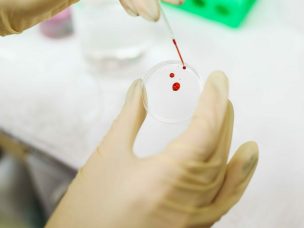The autophagy-associated protease Atg4a helps maintain mitochondrial quality during the development phase of red blood cells through autophagy and, thus, removal of dysfunctional mitochondria, according to a new study. The loss of this quality control results in low heme concentrations in red blood cells, even in the absence of overt iron deficiency.
Maintaining mitochondrial quality is essential for cellular homeostasis and plays a vital role in the regenerative capacity of hematopoietic stem cells as well as the differentiation of specialized blood cell types, notably during the production of red blood cells (RBCs). Mitochondria are essential for hemoglobin synthesis and heme production. Dysfunctional mitochondria are evident in various conditions like mtDNA mutations, sickle cell disease, and myelodysplastic syndromes, emphasizing the need to understand the molecular factors regulating mitochondrial quality control in erythropoiesis.
Although it is known that autophagy contributes to clearing mitochondria during the maturation of reticulocytes, little is understood about mitochondrial quality control in earlier stages of erythrocyte development. Early studies have identified a specific role for the autophagy-related protease ATG4A in human erythropoiesis. To understand how Atg4a-dependent autophagy contributes to erythropoiesis in a living organism, researchers created a new genetically modified mouse model. This in vivo research study was presented at the 65th ASH Annual Meeting & Exposition.
Blocking Atg4a Expression Reveals Distinctive Changes in Red Blood Cell Counts
To assess the role of Atg4a in vivo, investigators disrupted its expression by targeting specific exons using CRISPR/Cas9 in C57/BL6 embryos. Analysis of peripheral blood of adult Atg4a-/- knockout (KO) and Atg4a+/+ wild-type (WT) mice revealed normal hematocrit but distinctive changes in red blood cell parameters. Atg4a-/- mice exhibited elevated red blood cell counts, decreased RBC volume, and alterations in hemoglobin concentration without apparent iron deficiency.
Autophagy Plays a Vital Role in Early Erythropoiesis
To explore whether changes in erythrocyte maturation contributed to these observations, researchers used flow cytometry to quantify various erythroid progenitor populations in the bone marrow and spleen. Surprisingly, the investigation found no significant alterations in erythroid maturation between Atg4a-/- and Atg4a+/+ mice. However, the evaluation of mitochondrial dynamics using specific dyes indicated a reduction in active-to-total mitochondria ratio in early erythroid populations of Atg4a-/- mice. This suggests that the loss of Atg4a promotes mitochondrial function early in erythropoiesis by eliminating inactive mitochondria.
Since mitochondria are crucial for heme synthesis, this investigation further examined heme content in different erythroid populations. In Atg4a-/- mice, there was a significant reduction in heme content in reticulocytes compared to Atg4a+/+ mice, highlighting the importance of Atg4a in regulating mitochondrial function and subsequent heme production during erythropoiesis.
The Bottom Line
The study demonstrated the crucial role of mitochondrial quality regulation via autophagy and its protective role in erythropoiesis. If this function is compromised, such as in Atg4a-/- mice, it limits hemoglobin concentration in RBCs even if there is no overt iron deficiency. This is because heme is produced in mitochondria, and autophagy promotes mitochondrial function in early erythropoiesis.
Source
Stolla, M. (2023, December 11). Atg4a Promotes Mitochondrial Quality Control and Hemoglobin Production In Vivo. https://ash.confex.com/ash/2023/webprogram/Paper190593.html










